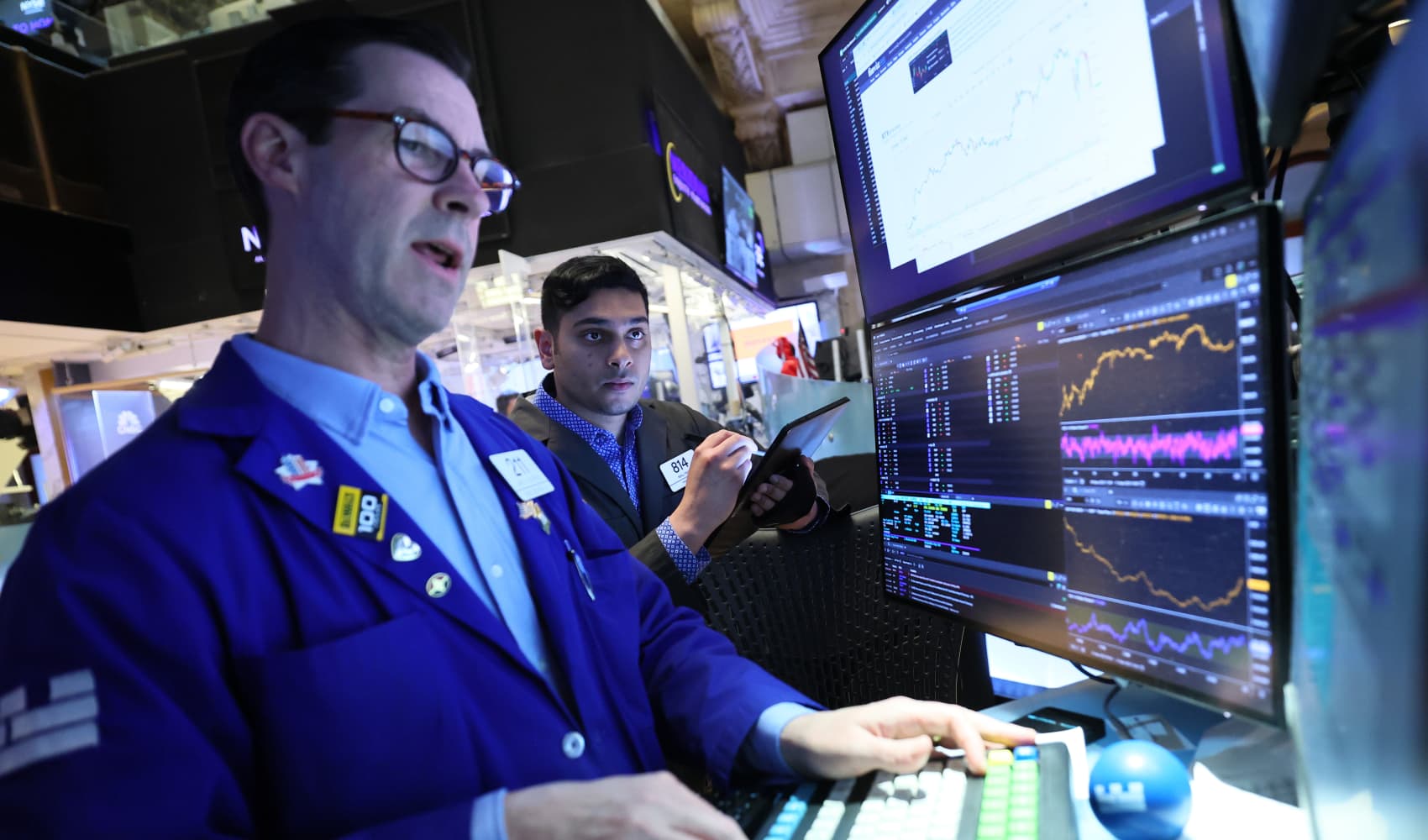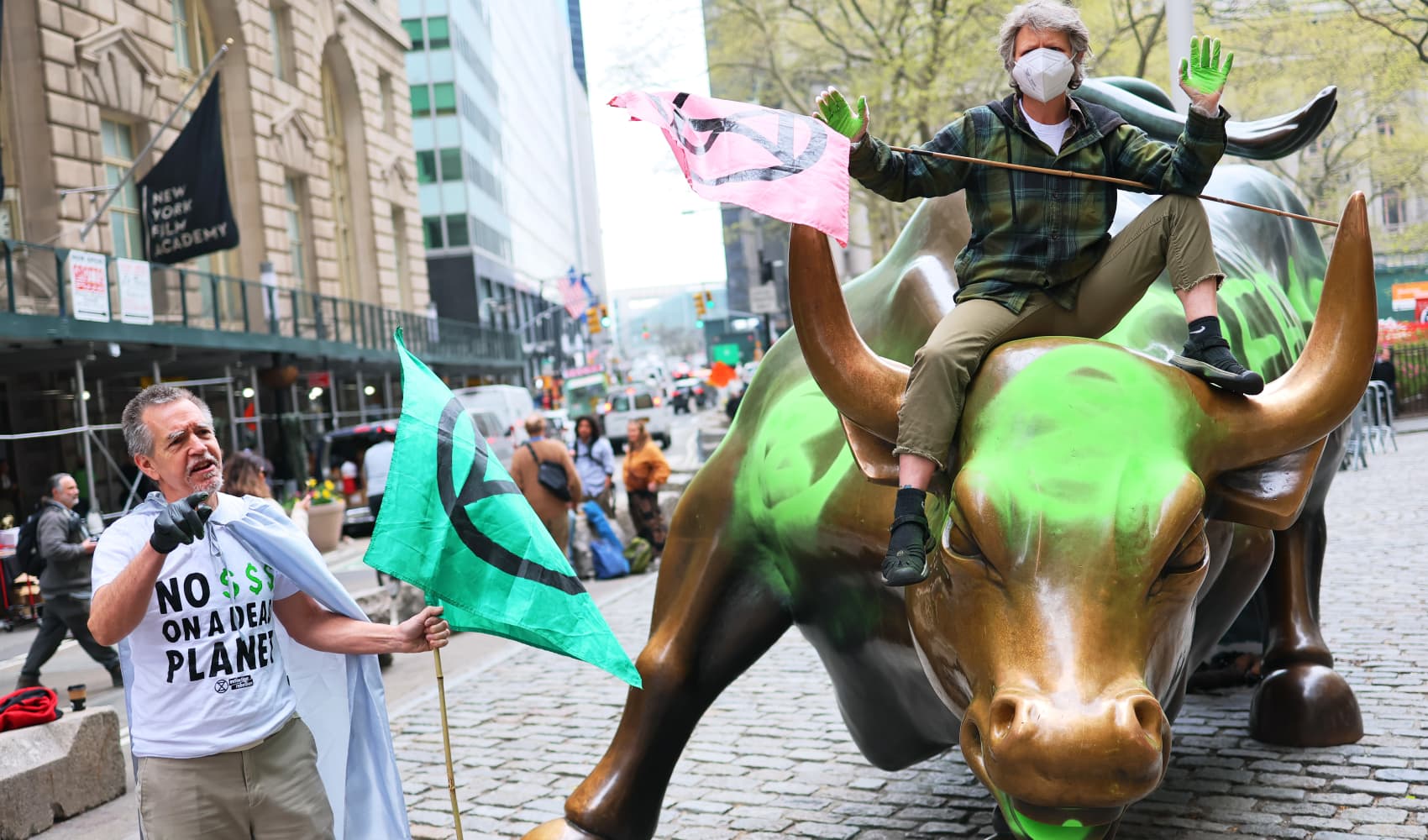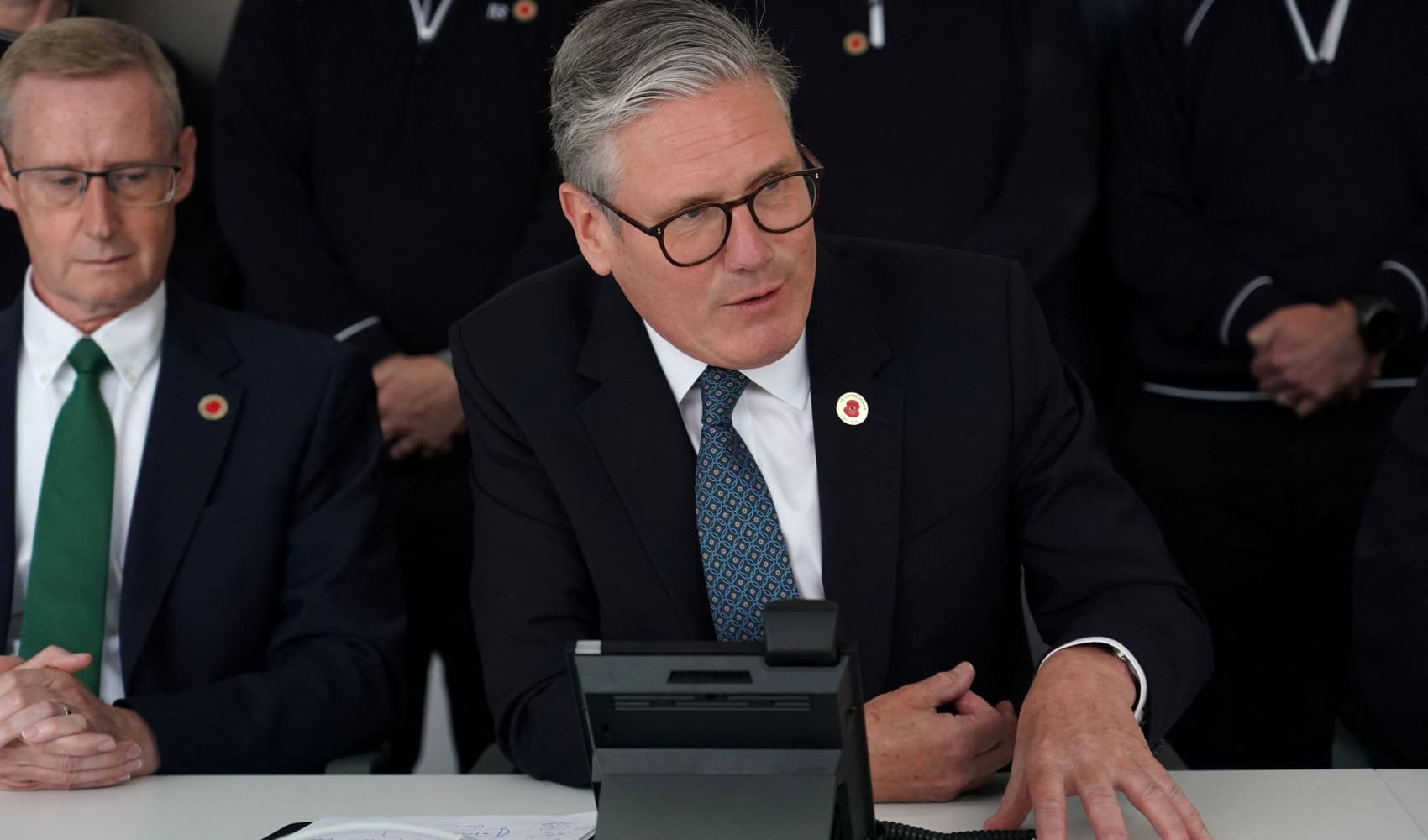Dow Soars 1000 Points: What's Next for Investors?
Dow Roars Back: 1,000-Point Jump Ends Losing Streak!
Introduction: A Sigh of Relief on Wall Street
Whew! After what felt like an eternity of red arrows and gloomy faces, Wall Street finally got a much-needed shot in the arm. Tuesday saw the Dow Jones Industrial Average surge by a whopping 1,000 points, snapping a four-day losing streak that had investors biting their nails. But what sparked this sudden burst of optimism? Let's dive in and unpack what happened, why it happened, and what it might mean for your portfolio.
The Big Numbers: A Closer Look at the Rally
Let's get down to brass tacks and look at the numbers that defined Tuesday's impressive market rebound:
- Dow Jones Industrial Average: Rose 1,016.57 points, or 2.66%, closing at 39,186.98.
- S&P 500: Gained 2.51%, settling at 5,287.76.
- Nasdaq Composite: Increased 2.71% to end at 16,300.42.
These aren't just arbitrary numbers; they represent a significant shift in investor sentiment. It's like the market took a deep breath and decided to embrace optimism again.
The Catalyst: A Glimmer of Hope in U.S.-China Trade
So, what fueled this impressive rally? The primary driver appears to be renewed hope for a potential de-escalation in the ongoing U.S.-China trade tensions. The market is like a thirsty plant, and the news of a possible trade truce was the refreshing rain it desperately needed.
Secretary Bessent's Remarks: The Spark that Ignited the Rally
According to reports, Treasury Secretary Scott Bessent hinted at a potential easing of trade tensions during a meeting with investors hosted by JPMorgan Chase. His comments suggesting that "there will be a de-escalation" and that "no one thinks the current status quo is sustainable" were enough to send stocks soaring.
It's important to remember that the market often reacts to rumors and speculation. Bessent's words, even without a concrete agreement, acted as a powerful catalyst for the rally.
Trade War Impact: Why It Matters
The trade war between the U.S. and China has been a persistent headwind for the global economy. Tariffs, retaliatory measures, and general uncertainty have weighed on businesses and investors alike. Think of it as a tug-of-war, where each side pulling harder only hurts everyone involved.
Sectors Most Affected
Certain sectors are particularly vulnerable to trade tensions:
- Technology: Many tech companies rely on China for manufacturing and components.
- Agriculture: Farmers have been hit hard by tariffs on agricultural exports.
- Manufacturing: Businesses that rely on global supply chains have faced disruptions.
The Rollercoaster Ride: Intraday Volatility
The Dow's rally wasn't a smooth, steady climb. At its peak, the index was up more than 1,100 points, but gains were trimmed later in the day. This highlights the inherent volatility of the stock market and the importance of staying calm amidst the ups and downs.
Beyond Trade: Other Factors at Play
While trade hopes were the primary driver, other factors likely contributed to the market's positive performance:
Oversold Conditions
After four days of losses, some analysts believe the market was simply oversold, meaning prices had fallen too far, too fast. This created a "buy the dip" opportunity for investors.
Technical Rebound
A technical rebound occurs when a stock or index bounces back after a period of decline. It's often driven by short-covering and bargain-hunting.
Investment Strategy: Navigating the Uncertainty
So, what should you do with this information? The market's recent volatility underscores the importance of having a well-diversified investment portfolio and a long-term investment strategy.
Diversification: Don't Put All Your Eggs in One Basket
Diversification is a crucial risk-management tool. By spreading your investments across different asset classes, sectors, and geographic regions, you can reduce the impact of any single investment on your overall portfolio. Think of it like building a strong wall – each brick contributes to its overall strength.
Long-Term Perspective: Stay the Course
It's easy to get caught up in the day-to-day fluctuations of the market, but it's important to maintain a long-term perspective. Trying to time the market is often a losing game. Instead, focus on building a solid investment foundation that can weather the inevitable storms.
Potential Risks: What Could Spoil the Party?
While Tuesday's rally was encouraging, it's important to acknowledge the potential risks that could derail the market's momentum:
Trade Talks Collapse
If U.S.-China trade talks fall apart, it could trigger another round of selling. Remember, the market hates uncertainty.
Economic Slowdown
A weakening global economy could also weigh on stock prices. Keep an eye on economic indicators such as GDP growth, inflation, and unemployment.
The Fed's Role: Watching Interest Rates
The Federal Reserve's monetary policy decisions can also impact the stock market. Rising interest rates can put downward pressure on stock prices, while lower rates can provide support.
Future Outlook: Cautious Optimism
The outlook for the stock market remains uncertain. While the potential for a trade truce is encouraging, there are still plenty of challenges on the horizon. A cautious and diversified approach is generally recommended.
Beyond the Numbers: The Human Element
It's easy to forget that behind the numbers and charts, there are real people whose lives are affected by the stock market. From retirees relying on their investments to young professionals saving for the future, the market's performance has a tangible impact on people's financial well-being.
Expert Opinions: What the Analysts Are Saying
Analysts' opinions on the market's future are mixed. Some believe that the rally is sustainable, while others caution that it may be a temporary bounce. It's important to consider a variety of perspectives before making any investment decisions.
Conclusion: Takeaways and Looking Ahead
Tuesday's 1,000-point surge in the Dow provided a much-needed boost to investor confidence. The rally was primarily driven by renewed hope for a de-escalation in U.S.-China trade tensions. While the market's future remains uncertain, it's important to maintain a diversified portfolio, a long-term perspective, and a healthy dose of cautious optimism. Remember, investing is a marathon, not a sprint.
Frequently Asked Questions
-
Why did the Dow jump so much on Tuesday?
The primary reason was renewed optimism regarding a potential de-escalation of trade tensions between the U.S. and China, fueled by comments from Treasury Secretary Bessent.
-
Is this market rally sustainable?
That's the million-dollar question! While encouraging, sustainability depends on factors like concrete trade agreements, the overall economic outlook, and the Fed's monetary policy. It's best to remain cautiously optimistic.
-
Should I sell my stocks now?
That depends on your individual circumstances and investment goals. Consult with a financial advisor to determine the best course of action for your situation. Don't make rash decisions based on short-term market movements.
-
What sectors benefit most from easing trade tensions?
Technology, agriculture, and manufacturing are generally the sectors that stand to benefit the most from a resolution to the U.S.-China trade war.
-
How can I protect my portfolio from market volatility?
Diversification is key. Spread your investments across different asset classes, sectors, and geographic regions. Also, maintain a long-term perspective and avoid trying to time the market.


